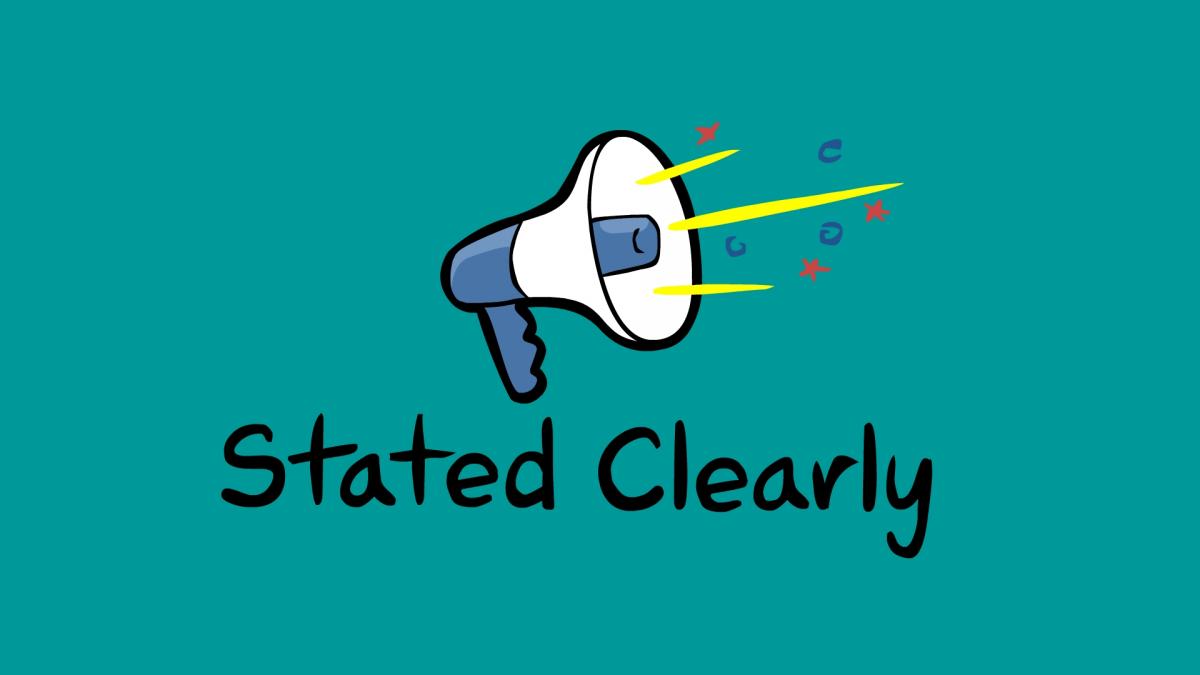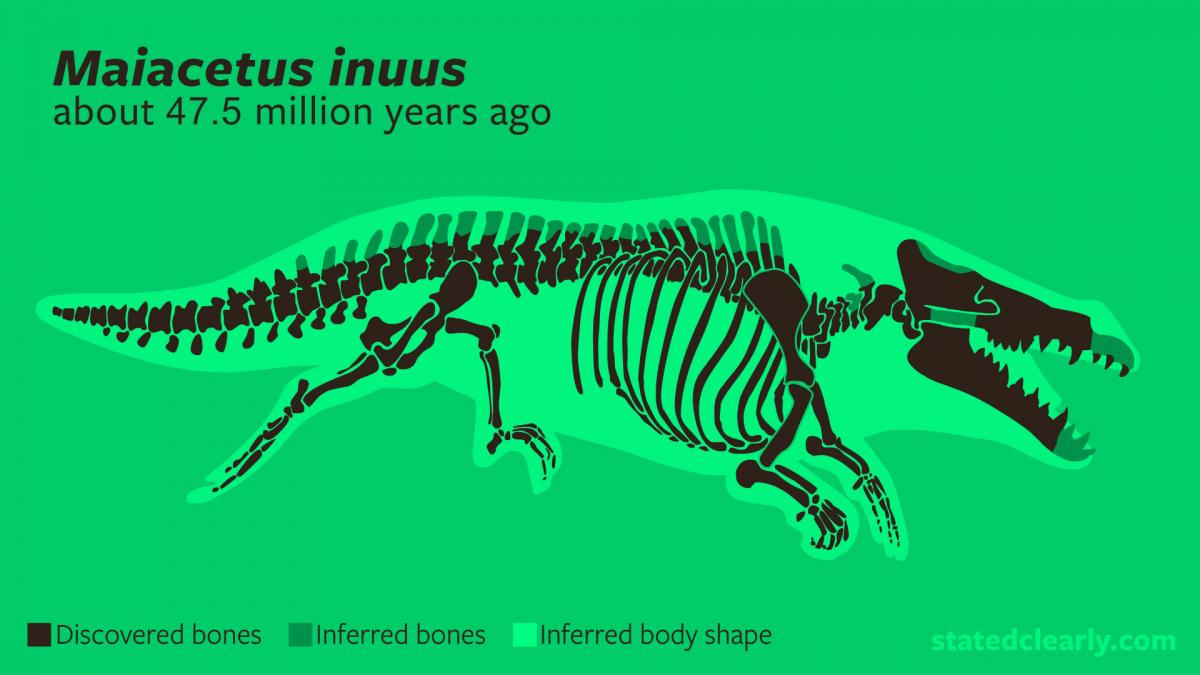
In part 1, Jon Perry told me how his company and website Stated Clearly came to be. The short story is that he wanted to find a way to explain his love of and wonder at evolution to his family and friends, many of whom would be classified as evolution deniers or at least evolution doubters. It didn’t take long for teachers to find and show Perry’s engaging animations in class, which set him on a course of creating videos for educational use. We talked at some length about his most popular video (also his favorite and mine): “What is the Evidence for Evolution?” This video uses the evolution of whales from land mammals to illustrate how different lines of evidence converge in support of evolution.
When we left off, Perry was telling me how anti-evolutionists were responsible, in large part, for the video being so strong. He even got them to review his scripts and first draft animation to point out any weaknesses. Let’s pick up there.
I love that people in anti-evolution forums were so eager to edit and critique your drafts. Did the “reviewers” ever find out you were using them to strengthen a pro-evolution animation?
Yes, it wasn’t a trick. I told them from the start that I needed help reviewing my video so I could make a solid final version. They all jumped at the opportunity anyway.
Do you find that the anti-evolution criticisms/arguments help at all with people who aren’t anti-evolution, but who might not have a strong grounding in evolution?
Yes, they do a lot actually. In part, this is because the anti-evo movement has planted its criticisms in so many people’s heads. That said, evolution is also just a tricky thing to wrap our minds around.
The most helpful critique I got from the anti-evolution editors was that my life reconstructions (drawings of what extinct whales may have looked like when alive) did not belong in a video that was supposed to be strictly showing evidence. They felt like these kinds of reconstructions, popular in textbooks and museums, overstate what we can actually know about an extinct animal. I personally love good paleoart (shout-out to John Conway) and a good reconstructed skeleton to help me imagine how an animal may have lived in the past. That said, I agree that we should be minimalists when building reconstructions that are intended to be used as evidence for evolution.
The main change I did from the draft to the final version was to take out any life reconstructions and replace them with drawings like the one below:

The dark bones represent what was actually found at the dig site, the light bones show what had to be reconstructed through inference, and the light body outline gives just a hint as to what the overall shape of the animal may have been like.
Minimalist reconstructions like this that show exactly what was and was not found are the standard in scientific journals (this one comes from the original paper on Maiacetus). Unfortunately they are not always standard in textbooks and museums. I think they should be. Transparency builds trust.
I agree with you 100%. I was at the London Museum of Natural History last spring, and although I had some issues with a few of their displays, one of the things that really impressed me was the signs that accompanied fossil displays. They were very clear about what was actual bone and what was inferred. That should absolutely be common practice. (Are you reading this, museum people?)
Anyway, back to you! Do you ever get comments/jeers from evolution deniers?
Ha, of course I do, it’s the internet! The whale animation actually got me my first YouTube death threat! Apparently I succeeded in my goal to make a video that couldn’t be explained away by deniers.
Sadly, vulgar comments often come from both sides. The anti-evo folks will say something aggressive, and science-defenders then often respond with equal hostility. Things can get out of hand pretty quickly.
So true. This has happened on our NCSE blog comments, too.
I’m not surprised. It’s unfortunate for many reasons. Worst of all, though, is when defenders get trigger-happy and mistake a person’s sincere question as an anti-evolution attack. Time and time again, I’ve seen genuine questioners get ridiculed by other commenters on the defensive. YouTube is wonderful but can sometimes be a hostile learning environment. Because of this, a good friend of mine, Jeremiah Deasey, volunteered to build our website where people can watch the animations in a much cleaner atmosphere: no ads, no fighting in comment sections. I recommend teachers use StatedClearly.com for sharing with students.
Do you think the animations are changing any minds in the anti-evolution movement?
The ugliness sometimes found in the comment section shows that I’m not convincing everyone. That said, I have been consistently receiving letters from people thanking me and telling me the animations either changed their views, or were useful in helping them change the views of their students or family members. Best of all for me, over a dozen of my relatives, most of whom are Mormon, have gone from being hesitant about evolution, to being curious and accepting of the science. My nieces and nephews get excited when I post a new video and they even come to my talks when I speak locally.
Here’s a blank check question: If you could do another five animations on any topic, what topics would you do, and why?
- What is science?
- How do complex organs evolve?
- How do we know the age of a fossil?
- What is a species?
- How do new species evolve?
People often feel it’s unfair that evolution is taught in science class when creationism is not. Following NCSE’s example, I’ve found the best way to address this concern is to carefully explain what science is, what science is not, and how science differs from the other methods we use when trying to understand the world.
On YouTube, our oldest video is “What is DNA and How Does it Work?” Those who have followed me from the start, however, will know that this is not actually the first video I made. The original Stated Clearly animation was called “What is Science?” I took it down because, being my first animation, the quality was poor, and it also had a few parts that my religious friends found unnecessary. For example, it included cartoon versions of Moses, Kent Hovind, Joseph Smith, and the Pope. The cartoons weren’t vulgar but they also weren’t particularly flattering. The original is no longer public on YouTube but people who contribute to Stated Clearly on Patreon get access to see it when logged in. After all these years, I’ve come up with a much better way to do that video. I’m excited to get started on it! The other four on my list represent the main requests I’ve been getting from biology teachers. If I had funding, I’d start on them right away!
Let’s hope for funding, then! Any final words for us?
First off, thanks for inviting me to talk with you. It’s an honor to be recognized in this way by NCSE. I’ve been a fan of the organization’s work for many years. The legal battles NCSE has taken on are extremely important. Project Steve is brilliant!
For my concluding words I’ll paraphrase the message of educator John Wooden: If they have not learned, we have not taught.
Postscript: I’m delighted to report that Jon Perry and I have plans not only to collaborate in the future, but also to go back and improve some issues in a few of the earlier videos. If you have questions for Perry, or want to contribute to his cause, you can contact him directly via his website.
Are you a teacher and want to tell us about an amazing free resource? Do you have an idea for a Misconception Monday or other type of post? Have a fossil to share? See some good or bad examples of science communication lately? Drop me an email or shoot me a tweet @keeps3.

